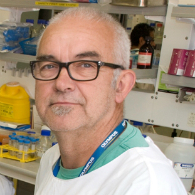Molecular Neurobiology - The Foa & Gasperini Group
Understanding the molecular mechanisms that regulate brain development and brain dysfunction.
Development of the nervous system is a complex, highly co-ordinated process. Neurons in the brain and spinal cord are connected and “wired” together to form circuitry that regulates all body function. Surprisingly, while the mature human brain contains trillions of neural connections, a relatively small number of genes control the way in which these connections are formed and modified. Human gene mutations that change protein function can lead to altered synaptic and cognitive function later in life. Many significant neurological conditions are now seen as alterations in “brain connectivity” and our research focus is to identify the fundamental mechanisms that regulate connectivity with the aim of identifying new drug targets.
Expertise
- Growth cone motility
- Second messenger signalling
- Calcium imaging
- Super resolution imaging
- Biology of the cytoskeleton
- Biology of the endoplasmic reticulum
- Zebrafish as a model system in neuroscience
Projects
STIM proteins as crucial regulators of axon guidance and regeneration
The ontogeny of serotonin as a guidance cue during neurodevelopment
Can rare mutations in the scaffold protein, Homer1 cause synaptic and axon guidance defects?
Is remodelling of ER a conserved component of cellular motility?
Group Leader(s)
Affiliation
Biomedical Sciences
School of Medicine
Contact
Email:
Group members
Ms. Silvia Vicenzi
Mr. Hayden Arnott
Mr. Daniel Bligh

